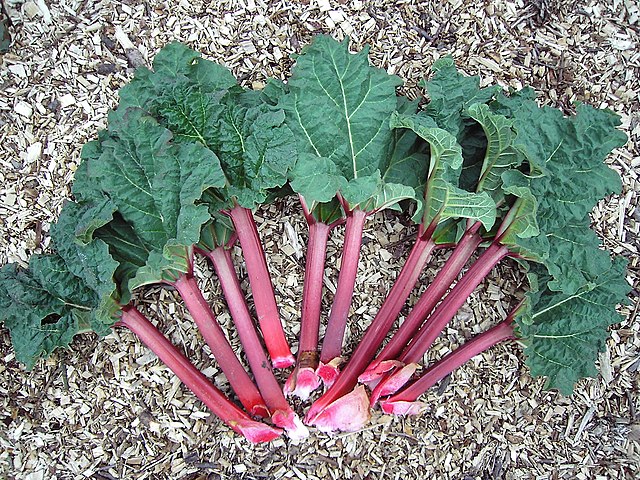Rhubarb is the fleshy, edible stalks (petioles) of species and hybrids of Rheum in the family Polygonaceae, which are cooked and used for food. The plant is a herbaceous perennial that grows from short, thick rhizomes. Historically, different plants have been called "rhubarb" in English. The large, triangular leaves contain high levels of oxalic acid and anthrone glycosides, making them inedible. The small flowers are grouped in large compound leafy greenish-white to rose-red inflorescences.
Rhubarb
Young rhubarb flowers
A bundle of rhubarb
A homemade rhubarb pie
In botany, the petiole is the stalk that attaches the leaf blade to the stem. It is able to twist the leaf to face the sun, producing a characteristic foliage arrangement, and also optimizing its exposure to sunlight. Outgrowths appearing on each side of the petiole in some species are called stipules. The terms petiolate and apetiolate are applied respectively to leaves with and without petioles.
Leaf of Pyrus calleryana with petiole
Harvested rhubarb petioles with leaf blades attached
Acacia koa with phyllode between the branch and the compound leaves
Pulvina at both ends of the petiole. Elaeocarpus multiflorus








